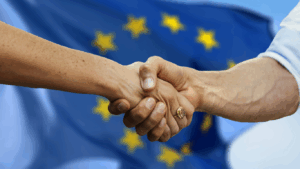Introduction:
In the world of digital communications, newsletters play a crucial role in maintaining engagement and sharing valuable information. With the advent of the General Data Protection Regulation (GDPR), however, the way we write and send newsletters has changed dramatically. Let’s explore together the nuances of this dance between relevance and privacy.

Relevant Content, Respectfully Packaged
1. Transparency as a First Step
The key to GDPR-compliant newsletters is transparency. In your registration forms, make it clear what information you are collecting and why. Tell your subscribers what to expect and how often they will receive your newsletter. A clear privacy statement is the basis of mutual understanding.
2. Consent as the Golden Rule
Before you send a newsletter to someone’s inbox, you need their permission. This means explicitly asking if they want to participate and making sure they understand what information you will share. Opt-out options should always be clear and easily accessible.
Writing for Interaction and Insight
1. Segmentation for Relevance
GDPR encourages marketers to target smarter. Segmentation is the key. Understand your audience and send specific content relevant to their interests and needs. This not only increases engagement but also shows respect for the privacy of individuals.
2. Clear Call-to-Action (CTA).
A well-written newsletter has a clear CTA. Whether sharing feedback, downloading a resource or participating in a survey, make the next steps simple and understandable. Be transparent about what happens when they push the button.
Technological Implications and Responsiveness.
1. Security and Storage of Data.
GDPR requires you to be careful with the data you collect. Make sure your newsletter platform meets security standards and that you store data in a secure manner. Be transparent about your processes.
2. Optimization for Mobile
Since many people read newsletters on their mobile devices, make sure your newsletter is responsive. A good mobile experience is not only important for engagement, but it also shows that you take your readers’ privacy seriously.
Conclusion:
A Balancing Exercise of Relevance and Privacy
GDPR has raised standards for digital communications, and rightly so. Newsletters can still be powerful tools to communicate with your audience, but it is crucial to strike a balance between relevance and privacy. With transparency, consent and purpose, newsletters can be not only informative, but also ethical and valuable to both companies and recipients. It is time to master this dance of relevance and privacy.
Do you need help/advice? We are at your service!









